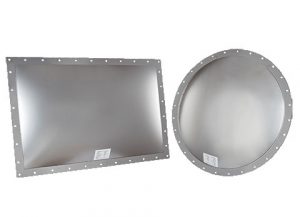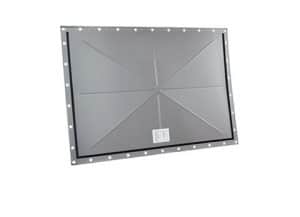Explosion Vents and the references for their safe installation and evaluation have been around since 1945, with updates from National Fire Prevention Association (NFPA) 68, “Standard on Explosion Protection by Deflagration Venting”, issued 1954, 1974, 1994, 2002, 2007, 2013 and 2018.

- Does not allow the removal of the bag/cartridge volume in the calculations.
- Makes you take a worst-case L/D (length over diameter ratio) in the calculations.
- Essentially running the calcs as if the vent panel is located on top of the vessel
- A 25% vent area increase for vent panels next to flexible dust bags.
- Metal dust tested Kst value to be doubled in calculations.
- Added vent area adjustment based on the operating pressure of the vessel.
Retrofitting explosion vents on dust collectors and other such dust handling equipment should elicits some questions before making the changes. It is impractical and potentially dangerous to match “bolt-hole to bolt-hole” and more investigation is required before proceeding. As in all cases with the explosion equipment selection process, start with a dust sample analysis and Dust Hazard Analysis (DHA) and then move ahead.

- Depending upon your dust Kst you may need to increase required vent area.
- Depending upon your dust Kst you may need to decrease required vent area.
- Depending upon your vessel strength you may need more or less vent area.
- Just replacing vents without review of the calculations places your people and facility at risk of not being protected properly and could cause further issues if not reviewed and designed per current NFPA Standards.
Systech Design has the know-how to review and provide the correct vents for your application. IEP Technologies has the engineered products basis for final selections. For most applications we can assist you with other parts of your protection system needs such as Explosion Isolation flap valves for duct and process vessel outlets.


